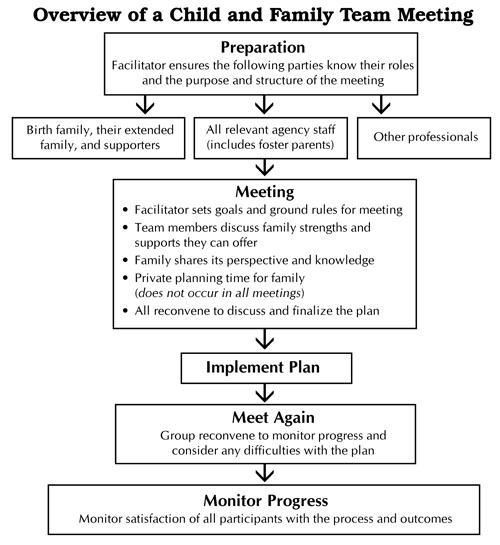Vol. 12, No. 1• November 2007
MRS: NC continues major child welfare reform effort
This issue talks a lot about the changes afoot in North Carolina’s child welfare system. For example, it discusses in some detail the state’s new rules for foster home licensing and it describes improvements we hope to make in response to the latest Child and Family Services Review. These changes are important, because sooner or later they will affect you as a foster parent.
However, if you want to talk about one of the most important influences on the lives of North Carolina’s foster parents and children, you must look not at what’s new, but at something that’s already here: MRS.
Multiple Response System
The Multiple Response System (MRS) is a reform effort that aims to make our child welfare system more family-centered. It began in 10 North Carolina counties in 2002, was refined by an additional 42 counties starting in 2003, and was integrated into state policy in 2006. Despite this fact, some counties are still striving to implement aspects of MRS.This is understandable once you consider what a multifaceted approach MRS is. It has seven core strategies:
- Collaboration between Work First and child welfare
- Strengths-based, structured intake process
- Choice of two approaches to reports of child abuse, neglect, or dependency
- Coordination between law enforcement agencies and CPS for the investigative assessment approach
- Redesign of CPS in-home family services
- Child and family team meetings during the provision of CPS in-home and placement services
- Shared parenting meetings during the first seven days a child is placed out of the home
These strategies have changed and will continue to change the way many social workers, foster parents, and others do their jobs throughout the entire continuum of child welfare. Two of these strategies in particular have a direct effect on foster parents: shared parenting and child and family team meetings.
Shared Parenting
Shared parenting is an approach designed to build a team focused on the welfare of the child: an alliance among birth parents, foster parents, and social workers. As with any team, trust is the foundation of this alliance.Of course, there can be barriers to this trust. Some foster parents, for example, are initially uncomfortable with the idea of helping or even meeting the parents of their children in foster care. First and foremost, they worry about the safety of the children and their own safety.
For their part, some birth parents see foster parents as direct competitors for their child’s affection and usurpers of their parental authority. Clearly, ideas and assumptions such as these do not facilitate the building of trust.
For shared parenting to work, foster parents must be clear about their role, which is to supplement and support birth families, not replace them. Foster parents must see themselves as part of the team working to rebuild and reunite families.
Some North Carolina foster parents already see themselves this way, and are fully integrated into the team serving the child and family. Others may not be there quite yet, and so may need support from their agencies and other foster parents.
The central mechanism for building trust and teamwork in the shared parenting approach is an agency-facilitated meeting that occurs as soon as possible after children enter foster care. In fact, MRS asks agencies to facilitate a shared parenting meeting within seven days after a child enters foster care. After this initial meeting, shared parenting meetings occur regularly until the family can be reunited or another permanent plan is identified.
CFTs
Under MRS, county DSS agencies hold child and family team meetings (CFTs) with families involved with child welfare services. The primary functions of these meetings are to engage the family and other interested parties in joint decision-making and to provide the family with support. These meetings address the family’s strengths and needs and how these affect the child’s safety, permanence, and well-being. The meeting also results in a plan that specifies what must occur to help the family safely parent the children.Child and family team meetings occur soon after the decision is made to substantiate or reach a finding of “in need of services.” CFTs are used with the family throughout the life of the case, even if it is not necessary to remove the child from the home.
Foster parents benefit from CFTs in several ways. Although foster parents will have already met the birth family at the shared parenting meeting, CFTs offer another great opportunity to build a relationship with and obtain information from the child’s parents.
In addition, CFTs allow foster parents to be there in person when important information is discussed and service agreements are made and reviewed. This enables foster parents to be part of the reunification effort, or whatever the permanent plan is for the child in their care.
The bottom line is, child and family team meetings are a great way for foster parents to stay up-to-date and to be active, contributing members of the team serving the family and child.
Links to Learn More . . .
• MRS <www.dhhs.state.nc.us/dss/mrs>.
• CFTs <www.practicenotes.org/vol8_no2.htm>
• Shared Parenting <www.fosteringperspectives.org/fp_v10n1/shared.htm>Copyright � 2007 Jordan Institute for Families

